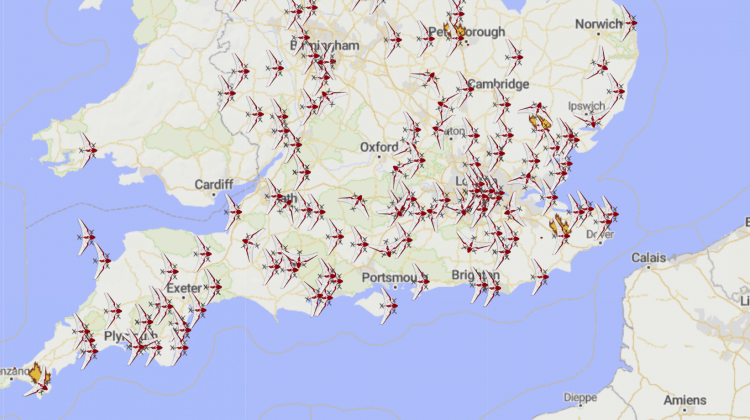
- Client :Abdallah Y.
- Category :Agent-Based, Optimization
- Project Url :N/A
- Date :October 23, 2018
Network Optimization and Simulation of Drones Supporting Fire Missions
Challenge
Several fires affect England throughout the year, some of them destroying vast areas of land, and while firefighters do their job amazingly, it is possible to improve the quality of the fire fighting activities by sending drones to the fire location in order to gather information before and during the mission.
The purpose of this project was to choose the correct drone design (endurance and speed), the right number of drones to use in the country and the geo-location of hubs where these drones must be located in order to cover as much land as possible while maintaining low costs.
Solution
The simulation model was built in AnyLogic using an Agent-Based approach, with three agents interacting with each other: the drone, the fire station (where the hubs are located) and the fire.
The model has an initial user interface where four different parameters can be controlled: the drone speed, the drone endurance, the hub seed and the total number of drones in the system. The hub seed defines, based on the total number of drones, which fire stations are going to be used as hubs and how many drones will be available in each hub.
The fires generated in the simulation model were all the fires that happened between 2014 and 2018. The purpose was not to predict how fires would attack in the future, but to find a pseudo-optimal solution for the drone design and distribution assuming that the fires will maintain the same behavior. The model also considered wind data, which affected the movement of the drones and the altitude in which they would fly to reduce its effect.
An optimization experiment was developed with the following objective function with C as a cost function of the endurance and the number of hubs and drones:
![]()
With the following restrictions :
- At least 75% of fires must be covered. A fire is covered if the nearest hub is able to send a drone with enough endurance to stay at least 7.5 hours in the mission (under neutral wind conditions).
- Arrival before fire trucks must occur at least 90% of the time.
AnyLogic uses OptQuest, a state-of-the-art optimization engine that uses heuristic methods to find pseudo-optimal solutions of highly non-linear problems.
The most powerful feature of heuristic methods is that they use random parameters and search in the surroundings of the objective function space if a good solution is found. Nevertheless, the size of this problem is too big and too complex to handle appropriately. With almost 1400 fire stations, the optimization algorithm would need to have one variable (number of drones) for each fire station, and this would require insane computer power to handle.
To simplify this, a random generator seed was used (called hub seed). The optimization algorithm will generate a solution based on the hub seed and the number of drones, which will define a network of randomly distributed hubs with a random number of drones on each hub and if a good solution is found, it will try different endurance values to find the best one for that network. This method relaxes the optimization by thousands of times and should still produce good results, in particular because the fire stations are already distributed based on the fire distribution requirements in the country.
Outcome
As usual in my projects, the client is most of the time very involved in the project and uses the tool provided to make his own analysis using the model and the excel export generated by the model with raw data from the simulation. The study now continues on the client side using the simulation as part of the full study.
Project Features
- Industry: Drones
- Model: Agent-Based
- Duration: 4 months
